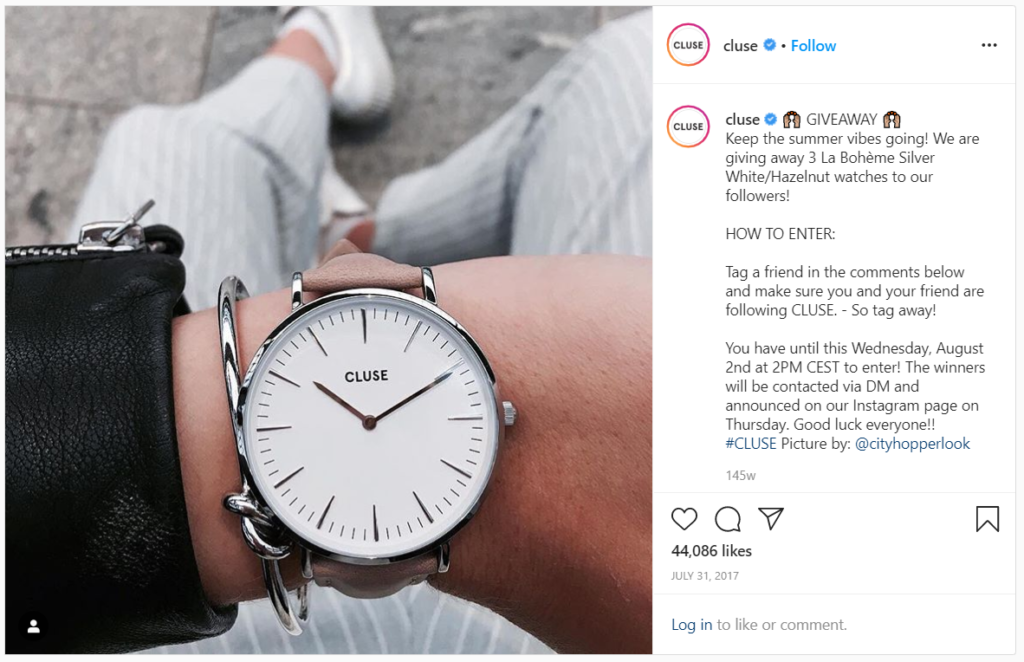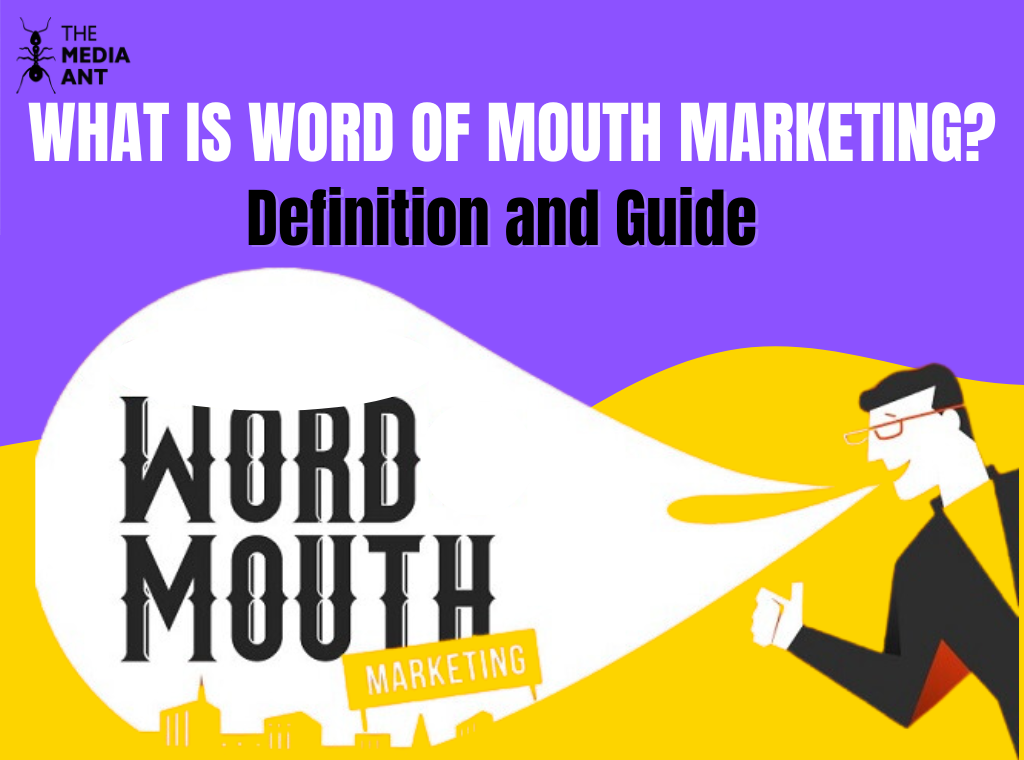Word of Mouth Marketing (WOMM) is a highly effective approach that capitalizes on individuals’ tendency to pass on their positive experiences and suggestions to others. Essentially, it entails leveraging the favorable feedback from happy customers to endorse a brand, product, or service through casual discussions and referrals.
In the current era of digital advancements, with social media platforms enabling rapid communication and extensive sharing, WOMM has gained even greater significance. This manual seeks to delve into the concept, fundamentals, and tactics of Word of Mouth Marketing, underscoring its role in establishing brand trustworthiness, boosting sales, and nurturing enduring customer connections.
What is Word of Mouth Marketing?
Word-of-mouth marketing is a promotional strategy that involves satisfied customers sharing their positive experiences with a brand, product, or service voluntarily. This type of marketing relies on personal recommendations and communication between individuals rather than traditional advertising methods. Word of mouth marketing utilizes personal connections, trust, and credibility to influence purchasing decisions and increase brand awareness. In today’s digital era, word-of-mouth marketing has expanded to include online reviews, social media posts, and endorsements from influencers.
Effective word of mouth marketing campaigns aim to create loyal brand advocates who enthusiastically promote the brand within their social circles and online communities. To benefit from word of mouth marketing, businesses should focus on providing exceptional customer experiences, encouraging user generated content, and building strong relationships with their audience to generate positive word of mouth referrals and drive business growth.
Basics of Word of Mouth
Word of mouth (WOM) is all about people sharing their thoughts on a product, service, or brand based on personal experiences or recommendations. It’s a powerful marketing tool that relies on trust and credibility to influence purchasing decisions. Here’s what you need to know about word of mouth:
1. Casual Conversations: Word of mouth happens naturally in everyday chats between friends, family, coworkers, and acquaintances.
2. Trust and Credibility: Recommendations from trusted sources carry a lot of weight. People are more likely to believe their peers than traditional ads.
3. Social Media Impact: In today’s digital world, word of mouth spreads to social media, where users post opinions, reviews, and recommendations.
4. Viral Potential: Exceptional products or experiences can go viral through word of mouth, spreading quickly online.
5. Brand Reputation: Positive WOM boosts brand reputation, while negative WOM can harm it.
6. Purchase Influence: Word of mouth is a key factor in consumer decisions.
7. Advocacy: Businesses can encourage positive WOM by providing great customer experiences, interacting genuinely with their audience, and rewarding happy customers who share their experiences.
Understanding and harnessing the power of word of mouth can help businesses grow organically and build strong customer relationships.
Types of Word of Mouth Marketing
Word of mouth marketing encompasses various strategies aimed at leveraging personal recommendations and influencing purchasing decisions. Here are some key types:
Genuine Word of Mouth
Genuine word of mouth occurs organically when happy customers voluntarily share their positive experiences with others. It is driven by their true satisfaction and trust in the product or service, without any external incentives or influence from the brand.
Enhanced Word of Mouth
Enhanced word of mouth involves deliberate efforts by businesses to encourage and amplify positive referrals. This can be achieved through exceptional customer service, creating content that is easily shareable, and actively engaging with customers on social media to amplify their recommendations.
Influencer Endorsements
Influencer marketing utilizes individuals who have a significant following and influence on social media platforms to endorse products or services to their audience. Brands collaborate with influencers who align with their target market, leveraging their credibility and reach to generate word-of-mouth referrals.
Customer Referral Programs
Customer referral programs incentivize existing customers to refer new customers to the business in exchange for rewards, discounts, or other benefits. By tapping into their loyal customer base, referral programs can drive word-of-mouth referrals and facilitate customer acquisition.
Buzz Creation
Buzz marketing creates excitement and anticipation around a product or service through innovative and unconventional marketing strategies. This may involve teaser campaigns, guerrilla marketing tactics, and utilizing social media platforms to generate buzz and stimulate word-of-mouth referrals.
Advocate Marketing
Advocate marketing focuses on transforming satisfied customers into passionate advocates for the brand. By nurturing a community of brand advocates who actively promote and defend the brand, businesses can generate influential word-of-mouth referrals and cultivate long-term loyalty.
By understanding the various forms of word-of-mouth marketing, businesses can develop comprehensive strategies to harness the power of personal recommendations and influence. This can lead to increased brand awareness, customer acquisition, and long-lasting loyalty.
How Effective is Word of Mouth Marketing?
Word of Mouth Marketing is a highly effective strategy because of its credibility, reach, and influence. Consumers are more likely to trust recommendations from friends, family, and peers over traditional advertising, making WOMM a significant factor in purchasing decisions. In addition, word of mouth has the ability to reach a large audience organically, particularly in the era of social media where recommendations can quickly go viral.
Furthermore, WOMM is a cost-efficient approach compared to other marketing methods, as it relies on utilizing existing customer relationships rather than large advertising budgets. It also builds authenticity and trust, as recommendations are based on real experiences rather than paid promotions. Businesses can capitalize on WOMM by offering exceptional products and services, actively interacting with customers, and encouraging referrals. In conclusion, WOMM is a valuable tool for enhancing brand awareness, cultivating customer loyalty, and driving sustainable growth.
Benefits of Word of Mouth Marketing
Word of Mouth Marketing provides a wide range of advantages for businesses aiming to improve their brand reputation, increase sales, and establish long-term customer loyalty. Some key benefits include:
– Trustworthiness and Reliability: Recommendations from friends, family, and peers are highly trusted by consumers, making word of mouth one of the most reliable forms of marketing.
– Cost-Efficiency: WOMM is often more cost-effective than traditional advertising methods, as it relies on utilizing existing customer relationships rather than extensive advertising budgets.
– Enhanced Brand Recognition: Positive word of mouth can significantly enhance brand recognition, as satisfied customers share their experiences with others, expanding the reach of your brand naturally.
– Improved Conversion Rates: Potential customers are more inclined to make a purchase based on a recommendation from someone they trust, resulting in higher conversion rates for businesses.
– Long-Term Customer Commitment: Establishing a strong network of satisfied customers who actively endorse your brand can lead to long-term customer loyalty and repeat business.
– Viral Potential: Exceptional products or experiences can trigger viral word of mouth, spreading rapidly through social networks and online communities, amplifying the impact of your marketing endeavors.
– Authenticity and Engagement: Word of mouth marketing promotes authenticity and engagement, as recommendations stem from genuine experiences rather than paid endorsements, fostering deeper connections with your audience.
Examples of WOM
Forever21

Forever21, for instance, motivates customers to showcase their fashion sense by posting pictures of their preferred outfits on Instagram. This genuine form of sharing serves as a powerful tool to enhance the reach of positive word-of-mouth.
Implementing promotional incentives such as coupons and exclusive discounts can significantly amplify brand recognition. Leveraging your affiliate or referral program, you have the opportunity to reward users with points or perks for creating various types of user-generated content – further details on this will be discussed later.
Cluse

Cluse’s giveaway post motivates its followers to mention their friends in a user-generated content post and also urges them to persuade their friends to follow its Instagram page.
Conclusion
In conclusion, word of mouth marketing utilizes the influence of personal recommendations and interpersonal trust to enhance brand recognition, boost sales, and cultivate customer loyalty. By utilizing contented customers as brand ambassadors and crafting remarkable experiences worth spreading, businesses can tap into the potential of word of mouth to attain long-lasting growth and triumph in the digital era.
FAQs on Word of Mouth Marketing
How does Word of Mouth Marketing differ from traditional advertising?
Word of Mouth Marketing (WOMM) differs from traditional advertising by relying on personal recommendations and genuine experiences shared between individuals, rather than paid promotional messages delivered through various channels like TV, radio, and print. WOMM is often perceived as more trustworthy and credible, as recommendations come from trusted sources rather than paid endorsements.
Are there any risks or challenges associated with Word of Mouth Marketing?
Indeed, Word of Mouth Marketing can be highly effective, but it also carries risks such as negative word of mouth, where dissatisfied customers share their experiences, potentially harming a brand’s reputation. Moreover, WOMM efforts may not always be controllable or predictable, making it difficult to accurately measure and track ROI.
How long does it typically take to see results from Word of Mouth Marketing efforts?
The timeframe for observing results from Word of Mouth Marketing initiatives can vary based on factors like the product or service being promoted, the target audience, and the effectiveness of the WOMM strategy. While some businesses may see immediate results, others may need time for word of mouth to spread and impact purchasing decisions.
Is Word of Mouth Marketing scalable for larger businesses?
Absolutely, Word of Mouth Marketing can be scaled for larger corporations through tactics like referral programs, influencer collaborations, and customer advocacy campaigns. By leveraging existing customer relationships and fostering brand advocates, larger corporations can enhance word of mouth referrals and engage a wider audience.
How do you identify and target key influencers for Word of Mouth Marketing?
Identifying and focusing on key influencers for Word of Mouth Marketing requires conducting thorough research on individuals who possess a substantial following and hold influence within your specific target market. This may encompass industry authorities, social media influencers, bloggers, and contented customers who have a robust online presence. By collaborating with these influencers, you can effectively enhance word of mouth referrals and expand your reach to a broader audience.





